Clancy Tucker's Blog, page 236
December 30, 2015
31 December 2015 - HAPPY NEW YEAR WISDOM

HAPPY NEW YEAR
G'day folks,
Well, we have made it to another year, and I sincerely hope 2016 has your name on it. So, to bring in the New Year, why not present some wise tips.

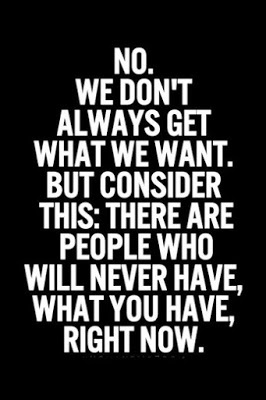
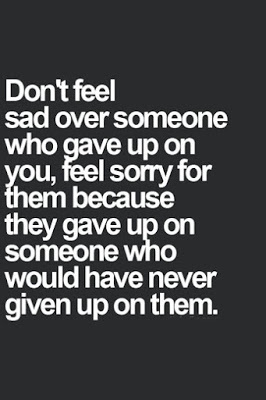


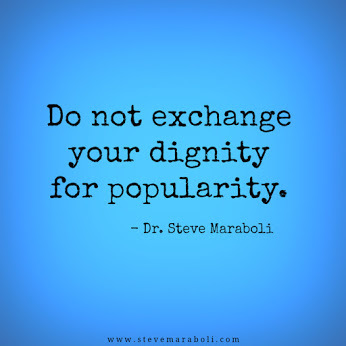
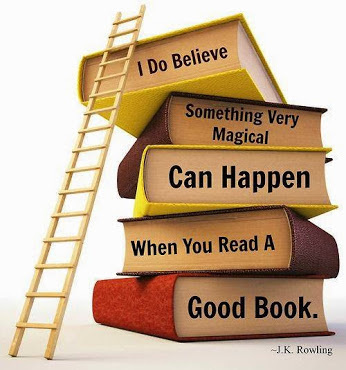
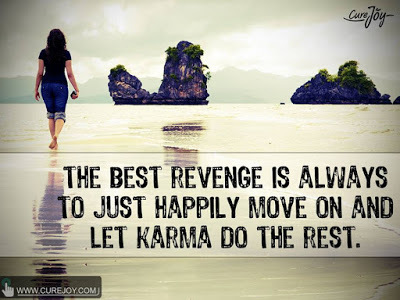

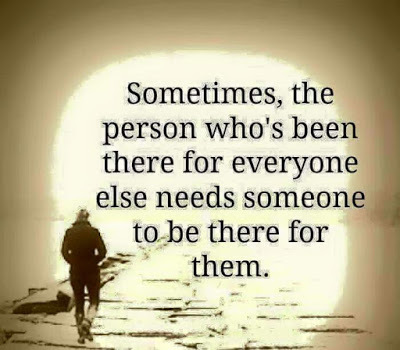
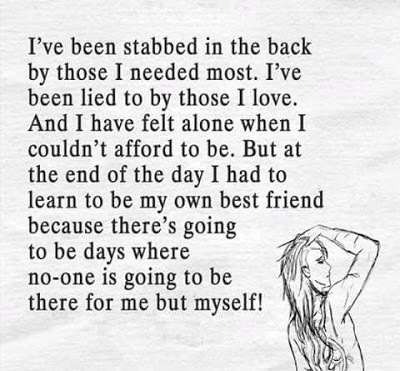
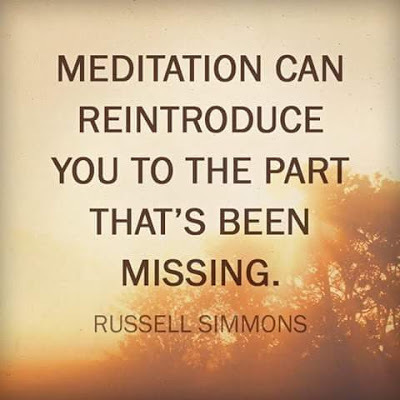

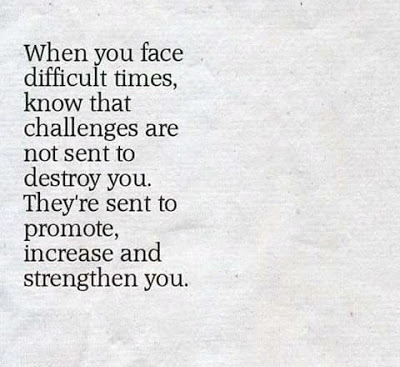
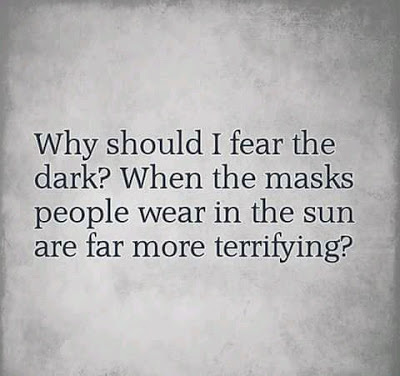
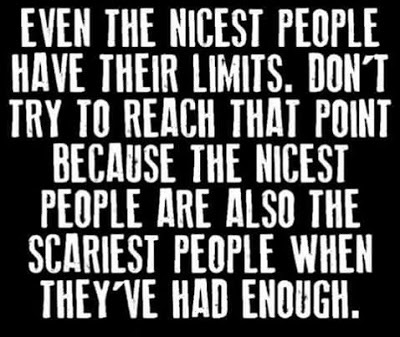




Clancy's comment: Happy new year everyone. May it be better than you imagine it will be. Keep plugging away. Never lose hope.
I'm ...
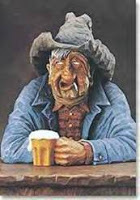

Published on December 30, 2015 03:16
December 29, 2015
30 December 2015 - UNKNOWN FACTS ABOUT MARIE CURIE
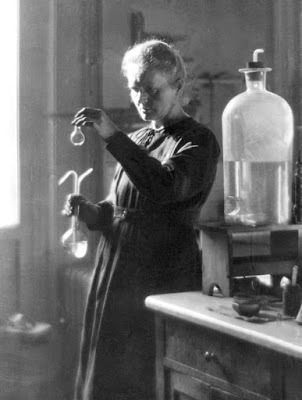
UNKNOWN FACTS ABOUTMARIE CURIE
G'day folks,
I always like to present outstanding women, and this lady is one of them.
Marie Curie is recognized throughout the world not only for her groundbreaking Nobel Prize-winning discoveries, but also for having boldly broken many gender barriers during her lifetime.
This seventh of November commemorated the birth of legendary scientist Marie Curie(born Maria Salomea Skłodowska) 148 years ago. With her husband, Pierre, the Polish-born Frenchwoman pioneered the study of radioactivity until her death in 1934. Today, she is recognized throughout the world not only for her groundbreaking Nobel Prize-winning discoveries, but also for having boldly broken many gender barriers during her lifetime.
Curie became the first woman to receive a PhD from a French university, as well as the first woman to be employed as a professor at the University of Paris. Not only was she the first woman to win the Nobel Prize, but also the first person (man or woman) ever to win the award twice and for achievements in two distinct scientific fields.
While Marie Curie’s major accomplishments may be well known, here are several surprising facts about her personal and professional life that may not be.
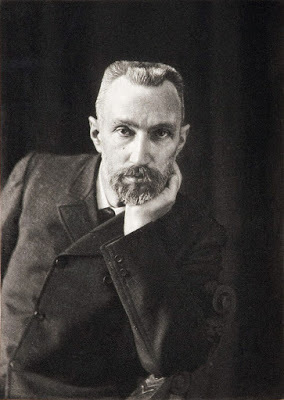
1) She Worked Out of a Shack It may come as a surprise to know that Marie and Pierre conducted the bulk of the research and experimentation which led to the discovery of the elements Radium and Polonium in what was described by the respected German chemist, Wilhelm Ostwald, as “a cross between a stable and a potato shed.” In fact, when he was first shown the premises, he assumed that it was “a practical joke.” Even after the couple had won the Nobel Prize for their discoveries, Pierre died never having set foot in the new laboratory that the University of Paris had promised to build them.
Nonetheless, Marie would fondly recall their time together in the leaky, drafty shack despite the fact that, in order to extract and isolate the radioactive elements, she often spent entire days stirring boiling cauldrons of uranium-rich pitchblende until “broken with fatigue”. By the time she and Pierre eventually submitted their discoveries for professional consideration, Curie had personally gone through multiple tons of uranium-rich slag in this manner.
2) She Was Originally Ignored by the Nobel Prize Nominating Committee
In 1903, members of the French Academy of Sciences wrote a letter to the Swedish Academy in which they nominated the collective discoveries in the field of radioactivity made by Marie and Pierre Curie, as well as their contemporary Henri Becquerel, for the Nobel Prize in Physics. Yet, in a sign of the times and its prevailing sexist attitudes, no recognition of Marie’s contributions was offered, nor was there even any mention of her name. Thankfully, a sympathetic member of the nominating committee, a professor of mathematics at Stockholm University College named Gösta Mittage-Leffler, wrote a letter to Pierre warning him of the glaring omission. Pierre, in turn, wrote the committee insisting that he and Marie be “considered together . . . with respect to our research on radioactive bodies.”
Eventually, the wording of the official nomination was amended. Later that year, thanks to a combination of her accomplishments and the combined efforts of her husband and Mittage-Leffler, Marie Curie became the first woman in history to receive the Nobel Prize.
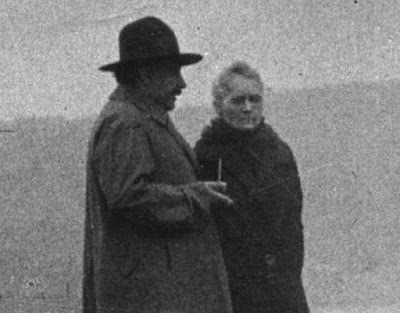
3) She Refused to Cash in on Her Discoveries
After discovering Radium in 1898, Marie and Pierre balked at the opportunity to pursue a patent for it and to profit from its production, despite the fact that they had barely enough money to procure the uranium slag they needed in order to extract the element. To the contrary, the Curies generously shared the isolated product of Marie's difficult labors with fellow researchers and openly distributed the secrets of the process needed for its production with interested industrial parties.
During the ‘Radium Boom’ that followed, factories sprang up in the United States dedicated to supplying the element not only to the scientific community, but also to curious and gullible public. Though not yet fully understood, the glowing green material captivated consumers, and found its way into everything from toothpaste to sexual enhancement products. By the 1920s, the price of a single gram of the element reached $100,000 and Curie could not afford to buy enough of the very thing she, herself, had discovered in order to continue her research.
Nonetheless, she had no regrets. “Radium is an element, it belongs to the people,” she told American journalist Missy Maloney during a trip to the United States in 1921. “Radium was not to enrich anyone.”
4) Einstein Encouraged Her During One of the Worst Years of Her Life Albert Einstein and Marie Curie first met in Brussels at the prestigious Solvay Conference in 1911. This invite-only event brought together the world’s leading scientists in the field of physics, and Marie was the only woman out of its 24 members. Einstein was so impressed by Curie, that he came to her defense later that year when she became embroiled in controversy and the media frenzy that surrounded it.
By this time, France had reached the peak of its rising sexism, xenophobia, and anti-semitism that defined the years preceding the First World War. Curie’s nomination to the French Academy of Sciences was rejected, and many suspected that biases against her gender and immigrant roots were to blame. Furthermore, it came to light that she had been involved in a romantic relationship with her married colleague, Paul Langevin, though he was estranged from his wife at the time.
Curie was labeled a traitor and a homewrecker, and was accused of riding the coattails of her deceased husband (Pierre had died in 1906 from a road accident) rather than having accomplished anything based on her own merits. Though she had just been awarded a second Nobel Prize, the nominating committee now sought to discourage Curie from traveling to Stockholm to accept it so as to avoid a scandal. With her personal and professional life in disarray, she sank into a deep depression and retreated (as best she could) from the public eye.
Around this time, Curie received a letter from Albert Einstein in which he described his admiration for her, as well as offered his heart-felt advice on how to handle the events as they unfolded. “I am impelled to tell you how much I have come to admire your intellect, your drive, and your honesty,” he wrote, “and that I consider myself lucky to have made your personal acquaintance . . .” As for the frenzy of newspaper articles attacking her, Einstein encouraged Curie “to simply not read that hogwash, but rather leave it to the reptile for whom it has been fabricated.”
There is little doubt that the kindness shown by her respected colleague was encouraging. Soon enough, she recovered, reemerged and, despite the discouragement, courageously went to Stockholm to accept her second Nobel Prize.
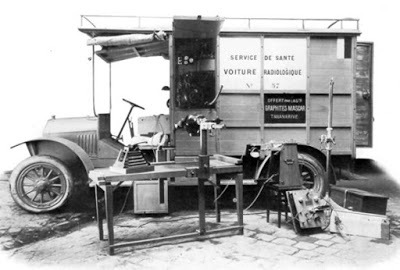
5) She Personally Provided Medical Aid to French Soldiers During the First World War When World War I broke out in 1914, Curie was forced to put her research and the opening of her new Radium institute on hold due to the threat of a possible German occupation of Paris. After personally delivering her stash of the valuable element to the safety of a bank vault in Bordeaux, she set about using her expertise in the field of radioactivity in order to aid the French war effort.
Over the course of the next four years, Curie helped equip and operate more than twenty ambulances (known as “Little Curies”) and hundreds of field hospitals with primitive x-ray machines so as to assist surgeons with the location and removal of shrapnel and bullets from the bodies of wounded soldiers. Not only did she personally instruct and supervise young women in the operation of the equipment, but she even drove and operated one such ambulance herself, despite the danger of venturing too close to the fighting on the front lines.
By the end of the war, it was estimated that Curie’s x-ray equipment, as well as the Radon gas syringes she designed to sterilize wounds, may have saved the lives of a million soldiers. Yet, when the French government later sought to award her the country’s most distinguished honor, la Légion d'honneur, she declined. In another display of selflessness at the outset of the conflict, Curie had even tried to donate her gold Nobel Prize medals to the French National Bank, but they refused.
6) She Had No Idea of the Dangers of Radioactivity
Today, 117 years after the Curies’ discovery of Radium, even the public is kept well aware of the potential dangers associated with the exposure of the human body to radioactive elements. Yet, from the very first years during which the scientists and their contemporaries were pioneering the study of radioactivity until the mid 1940s, little was concretely understood about both short and long-term health effects.
Pierre liked to keep a sample in his pocket so he could demonstrate its glowing and heating properties to the curious, and even once strapped a vial of the stuff to his bare arm for ten hours in order to study the curious way it painlessly burned his skin. Marie, in turn, kept a sample at home next to her bed as a nightlight. Diligent researchers, the Curies spent nearly every day in the confines of their improvised laboratory, with various radioactive materials strewn about their workspaces. After regularly handling Radium samples, both were said to have had developed unsteady hands, as well as cracked and scarred fingers.
Though the life of Pierre was tragically cut short in 1906, at the time of his death he was suffering from constant pain and fatigue. Marie, too, complained of similar symptoms until succumbing to advanced leukemia in 1934. At no point did either consider the possibility that their very discovery was the cause of their pain and Marie’s eventual death. In fact, all the couple's laboratory notes and many of their personal belongings are still so radioactive today that they cannot safely be viewed or studied.
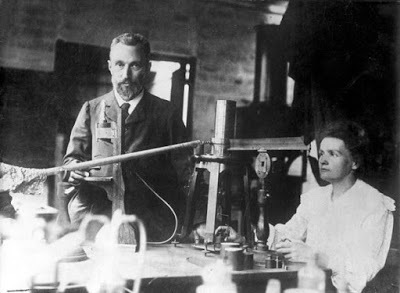
7) Her Daughter Also Won the Nobel Prize
In the case of Marie and Pierre Curie’s eldest daughter, Irène, it can safely be said that the apple did not fall far from the tree. Following in her parents’ sizable footsteps, Irène enrolled at the Faculty of Science in Paris. However, the outbreak of the first World War interrupted her studies. She joined her mother and began working as a nurse radiographer, operating x-ray machines to assist with the treatment of soldiers wounded on the battlefield.
By 1925, Irène had received her doctorate, having joined her mother in the field of the study of radioactivity. Ten years later, she and her husband, Frédéric Joliot, were jointly awarded the Nobel Prize in Chemistry for the breakthroughs they had made in the synthesis of new radioactive elements. Though it had been Marie’s pleasure to have witnessed her daughter and son-in-law’s successful research, she did not live to see them win the award.The Curie family legacy is both poignant and appropriately accomplished.
Irène and Frédéric Joliot had two children of their own, named Helene and Pierre, in honor of their incredible grandparents whose deaths were tragically premature. In turn, Marie’s grandchildren would both go on to distinguish themselves in the field of science as well. Helene became a nuclear physicist and, at 88 years old, still maintains a seat on the advisory board to the French government. Pierre would go on to become a preeminent biologist. Today, at the age of 83, he is a researcher at the French National Center for Scientific Research and a member of the French Academy of Sciences.
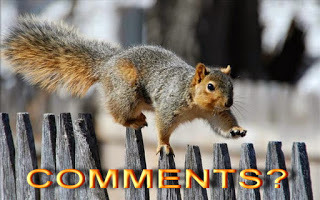
Clancy's comment: Mm ... Must have been tough for these pioneering women. They not only battled science, but also the ignorant men. You have to love their work and their spirit.
I'm ...

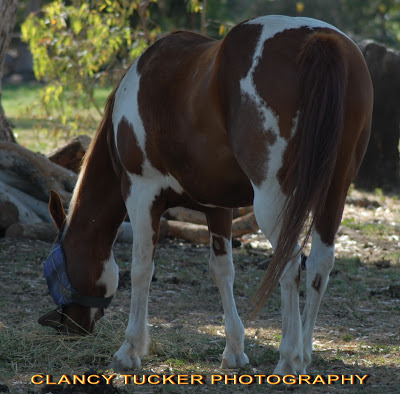
Published on December 29, 2015 01:36
December 28, 2015
29 December 2015 - GREAT QUOTES FROM ‘DIRTY DANCING’

GREAT QUOTES FROM'DIRTY DANCING'
G'day folks,
Twenty-eight years ago, 'Dirty Dancing' opened in theatres across America and made us "have the time of our lives." Here are some invaluable lessons through the film's best lines.
On August 21, 1987 the world would never look at their hips the same way again. When Dirty Dancing hit theaters, the low-budget-film-turned-box-office-jackpot gave birth to an era of sensuous bumping and grinding like there had never been before.
Dance attendance soared all across America! Everyone ransacked their closest T.J. Maxx for a pair of crisp, white Keds! And adults held onto their silverware and pocketbooks when granny and gramps planned for a visit!

Dirty Dancing made Jennifer Greyand Patrick Swayzemega stars and also carved out a special place for itself in pop culture history. Set in the 1960s at a family friendly resort in upstate New York, the simple storyline of young rebellious love amid the Haves and the Have Nots, interwoven with complex choreography, proved too irresistible a formula for moviegoers to visit theaters only once. The result? Dirty Dancing became one of the highest-grossing films of 1987.
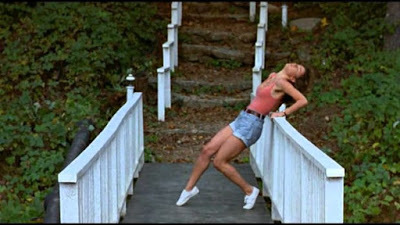
To celebrate swaying like Swayze, we pulled some of the best life lessons from our favorite Dirty Dancing quotes. (And if you don't agree... well, we suggest you do what Baby's sister did: "You can wackle all you wanna, you can wackle while we walk away..." )
"Oh, come on, ladies. God wouldn't have given you maracas if He didn't want you to shake 'em!" –Penny
**LIFE LESSON #1: You gotta let loose sometimes
"Look, spaghetti arms. This is my dance space. This is your dance space. I don't go into yours, you don't go into mine. You gotta hold the frame." –Johnny
**LIFE LESSON #2: Be professional when you're called to do so
"I carried a watermelon." –Baby
**LIFE LESSON #3: Be honest
"Go back to your playpen, Baby." –Penny
**LIFE LESSON #4: Know your place within a group
Johnny: "What's your real name, Baby?"
Baby: "Frances. For the first woman in the cabinet."
Johnny: "Frances. That's a real grown up name."
**LIFE LESSON #5: Be encouraging whenever you can
"You just put your pickle on everybody’s plate, college boy, and leave the hard stuff to me." –Johnny
**LIFE LESSON #6: Don't leave a mess for others to clean up
"You don’t understand the way it is, I mean for somebody like me. Last month, I’m-I-I’m eating Jujubes to keep alive, this month women are stuffing diamonds in my pockets." –Johnny
**LIFE LESSON #7: The ways of the world don't always make sense... and that's just the way it is
"Me? I’m scared of everything. I’m scared of what I saw, I’m scared of what I did, of who I am, and most of all I’m scared of walking out of this room and never feeling the rest of my whole life the way I feel when I’m with you." –Baby
**LIFE LESSON #8: Be vulnerable even when it hurts
"Nobody puts Baby in a corner." –Johnny
**LIFE LESSON #9: Know your true value
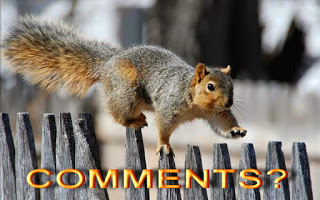
Clancy's comment: I loved this movie. What a shame Patrick is no longer with us.
I'm ....


Published on December 28, 2015 04:29
December 27, 2015
28 December 2015 - JACK THE RIPPER

JACK THE RIPPER
G'day folks,
Here is some interesting background about Jack the Ripper.
Russell Edwards, a businessman with no medical or law enforcement experience, devoted decades of his life to figuring out the identity of Jack the Ripper.After purchasing a shawl that was found next to the corpse of Catherine Eddowes, one of the notorious serial killer’s victims, Edwards worked with scientist Jari Louhelainen to analyze DNA that was found on it and compare it to the DNA of Eddowes’s descendants and longtime Ripper suspect Aaron Kosminski. In his book Naming Jack The Ripper ,Edwards claims that both Eddowes and Kosminski’s DNA was found on the shawl, proving: “He is no longer just a suspect. We can hold him, finally, to account for his terrible deeds. My search is over: Aaron Kosminski is Jack the Ripper.”
However, not everyone has accepted his findings. British newspaper The Independent asserted that Louhelainen made a major error, misidentifying a mutation in both Eddowes and her descendant’s DNA as extremely rare when in fact it’s present in over 90 percent of Europeans.
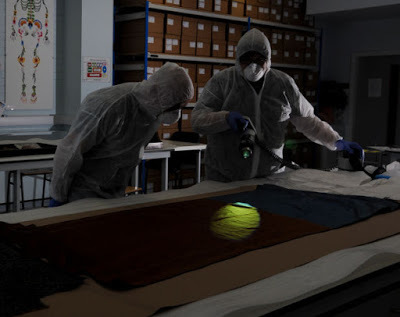
In an exclusive interview, Edwards defends his research. “Number one, may I just say that [article] was incorrect. And number two, it was one piece of a huge puzzle and that wasn’t the significant piece... It had no influence on the fact that we actually solved the mystery through the semen [on the shawl] and we had the match with the blood of the descendant. [The Eddowes DNA match] was an extra.”
Edwards explained the process that Louhelainen used to come to his conclusions: “On the reverse, on the inside of the shawl, is a blue square and it looks like it was wiped off. There are two very clear blue clots on there. If you do a big C with your hands, the clots are about that size and it looks like blood. I’m not a scientist, but it just looks like blood. And those white dots were blood spatter. Jari tested that and we got the DNA.”
Edwards then struggled to find a female descendant of Eddowes. “It could have very well been that there wasn’t a direct descendant in the female line and we would have never been able to do anything. But lucky enough for me, there was a program called Find My Past and Karen Miller, Eddowes’s great–great-great granddaughter, was on the [show] and she was a direct descendant on the female line and it was a massive revelation, a massive Christmas moment if you like.”
Edwards then had to persuade a complete stranger to give him a sample of her DNA. “The daunting thing for me was to actually approach her and explain what we were doing, explain the process and if there was any possibility of [procuring] the DNA [sample]. It was excruciatingly [difficult] for me because I didn’t want her to put the phone down as [had happened] so many times asking for other people’s help... I made it very clear that I was a married man with children and that I wasn’t some weird guy with a room covered in Ripper pictures and she was very happy to cooperate.”
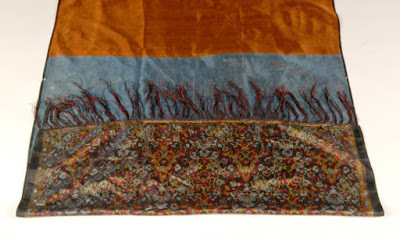
The big breakthrough came when Louhelainen discovered traces of semen on the shawl. “He said that there were stains on there that looked like they could be semen stains because they fluoresced the same color. So he managed to extract these samples from those semen stains..." He was also able to persuade a descendant of Kosminski to donate her DNA. “I found the descendants of his sister, which was on the female line. We found a 100 percent match with her; it was just phenomenal.”
Edwards theorizes that the shawl belonged to Kosminski, not Eddowes, who was an impoverished prostitute. “What sort of made the whole thing fit together was when we analyzed the shawl and the dye analysis of the shawl, the origin of the shawl is Russian. We know he came from Poland, which was under Russian rule. We knew that Catherine Eddowes wouldn’t have been able to afford a garment of such quality. So we managed to piece together [that] it was left at the murder scene by the Ripper, which means that the significance of the semen on the shawl was that it was deposited by him and not just an average customer of the prostitute.”
So is the science sound? According to Donna Cline, the technical advisor for the forensics-driven television show Bones, when analyzing very old DNA sample, “It depends on how viable your material is,” but it is possible to find conclusive data. However, even if both Kosminski’s and Eddowes’s DNA is on the shawl, there’s no way to prove that both the blood and the semen came from the crime scene. For example, it’s possible that Kosminski was one of Eddowes’s johns who gave her the shawl and someone else killed her. Said Cline, “There’s no proof about their relationship.”
Edwards takes the backlash to his research in stride. "There are so many people that still want this to be a myth. There are so many people that still don’t want this to be solved and whenever anybody comes up with a theory, people just try and completely stomp it out of existence, but with this one they can’t. We have done the scientific research in the correct manner. We know we've got this murderer..."
Edwards added that Louhelainen plans to submit his findings for peer review by other scientists. “That’s exactly what Jari’s on the case to do now. We’ve conclusively done it, but we want to show the world we’ve got nothing to hide.”

Clancy's comment: There ya go. Interesting, eh?
I'm ...


Published on December 27, 2015 01:54
December 26, 2015
27 December 2015 - POPPY INKWELL - Guest Author
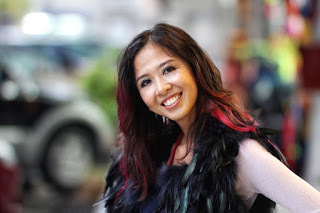
POPPY INKWELL- Guest Author -
G'day folks,
Today, I am pleased to introduce you to Poppy Inkwell.
Welcome, Poppy ...
1. TELL US A LITTLE ABOUT YOURSELF AND YOUR WRITING JOURNEY.
My first literary effort was made with bright orange lipstick scrawled across my parents’ bedroom walls at age three. I think I was destined to write about crime and mystery because I promptly ate the evidence.
My family and the children I have subsequently taught have been a constant source of inspiration for my writing. I remember writing one children’s story inspired by my mother-in-law’s struggle with smoking and my three older children did the illustrations. When I thought my younger daughter might need glasses I wrote a story about a school girl who was worried about needing glasses. It turned out the character was happy to have them (I won’t spoil it and say why).
In many ways I see story-writing as a way of helping people cope because I derive comfort from reading stories myself.
2. WHEN AND HOW DID YOU BECOME A WRITER?
I began writing as a child. The school librarian wouldn’t let me borrow a picture book for an extra week unless I put words to the illustrations so I wrote my first story. I’ve written bits and pieces ever since. I committed to writing full-time about five years ago after reading about an environmental disaster that I thought would make a great children’s story. The manuscript didn’t make it but it led to other things that did.
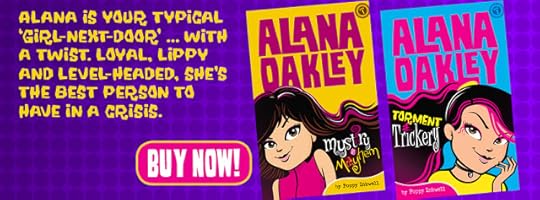
3. WHAT TYPE OF PREPARATION DO YOU DO FOR A MANUSCRIPT? DO YOU PLAN EVERYTHING FIRST OR JUST SHOOT FROM THE HIP?
I wish I was a planner but I’m not. But the one rule I live by is that I never start writing unless I have a clear picture of the beginning and end because all my endings have to have a ‘twist’. After that I fill in the bits and pieces with notes to self about what should go here or there for later. I jot down all my ideas in one file and refer to it as a guide while I’m writing, but often this will change as the story gets built up and filled in.
4. WHAT DO YOU ENJOY MOST ABOUT BEING A WRITER?
I love the autonomy of writing and the licence to use my imagination. I also love my characters and feel really close to them. It’s as if they’re real people with real personalities. When I write about a character ‘getting into mischief’ I revel in the vicarious pleasure of being naughty too. When I’m able to share an insight into someone’s personal pain, for example when Trân talks about landmines in Cambodia, it’s an opportunity to provide unexpected windows into other cultures and alien experiences. That’s the ‘teacher’ part of me coming out, I guess.
5. WHAT IS THE HARDEST THING ABOUT BEING A WRITER?
The fact that people don’t take you seriously until you’re published. Until then, many people see writing as a ‘hobby’, or you don’t feel you’ve earned the right to say you’re a writer until you’re published. You need a stubborn streak to keep going, and very thick skin. Not everybody will like what you write and that’s okay.
6. WHAT WERE YOU IN A PAST LIFE, BEFORE YOU BECAME A WRITER?
I have been a DJ for 2RSR Koori Radio, an interpreter for a Japanese ultra-marathon runner in the Sydney-to-Melbourne race, and I’ve done PR for bands like Vicious Hairy Mary and Sydney’s avant-garde performance artists, the Post Arrivalists. Curious about Islam, I went to Brunei to teach English to ASEAN diplomats for 6 months and ended up living there for almost 15 years!
7. WHAT IS YOUR GREATEST WRITING ACHIEVEMENT?
I think my greatest writing achievement is actually an unpublished manuscript (!) It’s a children’s picture book that takes the reader to lots of different countries through different children’s eyes. I would love to get photographers I’ve met through Instagram involved in putting pictures to the text.
8. WHAT ARE YOU WORKING ON AT THE MOMENT?
I’m working on Book 4 in the Alana Oakley series. The four girls in the book become separated and I’m keen to explore issues of resilience, identity and stereotypes.
9. WHAT INSPIRES YOU?
The humour in my stories is inspired by real events that I collect from newspapers and online reports.

10. WHAT GENRE DO YOU WRITE?
Mystery/humour
11. DO YOU HAVE ANY TIPS FOR NEW WRITERS?
a. Write, even if you think it is rubbish. The more you do it, the better you will get and the more distinctive your voice will become.b. Seek professional help. Getting friends to read your work is great but an objective eye provides constructive feedback and concrete ideas to help you make the necessary changes.c. Don’t do it for the money.
12. DO YOU SUFFER FROM WRITER’S BLOCK?
In the beginning I really struggled to find my own ‘voice’ as a writer so I read a lot of books and chose my favourite passages and typed them out. Even though they weren’t my own words, the act of typing out really beautifully crafted words helped me find a voice that was my own.
I also find taking a shower helps ... Go figure!
13. DO YOU HAVE A PREFERRED WRITING SCHEDULE?
My warm-up is to edit what I’ve written the day before. I’ll finish off a writing session with more editing.
14. DO YOU HAVE A FAVOURITE WRITING PLACE?
I write at the dining table ... conveniently close to the kitchen for those all-important energy boosts.
15. WHAT IS YOUR GREATEST JOY IN WRITING?
Seeing someone laugh out loud while they’re reading YOUR book. Nothing beats that feeling.
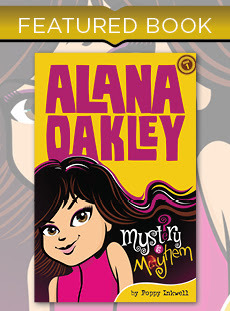
16. WHO IS YOUR FAVOURITE AUTHOR AND WHY?
I love Terry Pratchett and his Discworld series because he has crafted entertaining stories that are so wise and so profound; they teach me about myself and the nature of humanity. Plus the fact that his character, Death, speaks in CAPITALS is a masterstroke. He is such a loss to the world of literature.
17. WHAT’S THE GREATEST COMPLIMENT YOU EVER RECEIVED FROM A READER?
S (age 12) “I finished Book 2 and then I was like, I want more, more, more.”
18. WHAT WAS THE WORST COMMENT FROM A READER?
No negative comments that I know of as the series hasn’t been widely reviewed but Book 1 once received a rating of 3/5 on Goodreads.
19. WRITERS ARE SOMETIMES INFLUENCED BY THINGS THAT HAPPEN IN THEIR OWN LIVES. ARE YOU?
I’ve had to escape from a public toilet. I’ve cuddled up to a stranger because I mistook him for my dad. And I’ve been frisked at Long Bay Gaol ... not all on the same day. While I have not used these specific examples in my writing, I have drawn on the overall arching question which I ask myself in these situations: How did I get into this?!
20. OTHER THAN WRITING, WHAT ELSE DO YOU LOVE?
I’m Asian so of course, food! Music and art are also very important to me, and I love taking photographs, so travel is a real passion, too.
21. DID YOU HAVE YOUR BOOK / BOOKS PROFESSIONALLY EDITED BEFORE PUBLICATION?
Yes, I worked with a professional assessor before approaching a publisher and then the books went through another editing process with Big Sky Publishing.
22. DESCRIBE YOUR PERFECT DAY.
A successful morning of prolific writing, eating great food in great company, an afternoon nanna-nap, taking beautiful portraits of everyday people in an exotic locale and then finding a bargain in a car boot sale. The perfect day would end with tapas and a virgin mojito with my husband as we listen to live music.
23. IF YOU WERE STUCK ON A DESERT ISLAND WITH ONE PERSON, WHO WOULD IT BE? WHY?
Bear Grylls because if anyone could get me off that island, he could ... or at least keep us alive until someone rescued us.
24. WHAT WOULD YOU SAY IF YOU HAD THE CHANCE TO SPEAK TO WORLD LEADERS?
I would borrow Maya Angelou’s words and remind them that “hate has caused a lot of problems in the world, but has not solved one yet.” I’d also demand that they take on Zainab Salbi’s suggestion to allow the non-combatants a place at the negotiating table once the fighting is over. If humanity is truly serious about long-lasting peace then it has to cease being negotiated by soldiers.
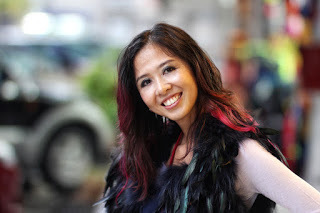
25. WHAT ARE YOUR PLANS FOR THE FUTURE?
I gave my husband and younger daughter tickets to the recent One Direction concert. Neither of them really appreciated the gesture (not being fans) but it was important to me that they experienced that slice of history. I would want my own future to be full of unique experiences.
26. WHAT ARE YOUR VIEWS ON BOOK TRAILERS? DO THEY SELL BOOKS?
I think they can definitely help.
27. DO YOU SEE YOURSELF IN ANY OF YOUR CHARACTERS?
There are bits of me in Emma, Alana Oakley’s mum, but I’d like to think I’m nowhere near as embarrassing or untogether!
28. DOES THE PUBLISHING INDUSTRY FRUSTRATE YOU?
I’m still finding my way around so I can’t really comment yet.
29. DID YOU EVER THINK OF QUITTING?
Yes and no. I don’t think I could have ever stopped writing but I was often tempted not to submit my manuscripts. During these periods I thought it was okay for writing to be ‘just a hobby’ when deep down it was important to me to have the external acknowledgment that I could actually write.
30. WHAT WAS YOUR FAVOURITE MANUSCRIPT TO WRITE? WHY?
I loved writing Book 3 because it flowed really well and I was able to add so much more depth to my characters. I got very involved in the storyline and even made myself cry at my own ending! Pathetic!
31. HOW WOULD YOU DEFINE ‘SUCCESS’ AS A WRITER?
Success comes in many forms to many people but I would feel a really big victory if I received feedback from readers who felt they were no longer invisible because of reading my books.
32. WHAT SHOULD READERS WALK AWAY FROM YOUR BOOKS KNOWING? HOW SHOULD THEY FEEL?
I’d like them to know more about themselves and other cultures, through humour. If they’re suffering from stitches from laughing I’ll consider it a job well done.
33. WOULD YOU LIKE TO HAVE YOUR BOOKS MADE INTO MOVIES? EVER WRITTEN A SCREENPLAY?
I’m a very visual person. I think it’s because I was a bit of a TV addict as a child. While I was a big reader, I also watched a LOT of shows like Batman and Robin, Get Smart, and the Thunderbirds. So when I write I see ‘min-movies’ in my head (complete with cartoon-like Kablams!) I could definitely see my books as a TV series but no, I have never written a screenplay.

34. HOW MUCH THOUGHT GOES INTO DESIGNING A BOOK COVER?
A lot (!) but I’ve learnt that it’s difficult to convey a visual concept unless you have the talent to create it yourself. Sometimes the reality is that you have to compromise.
35. WHAT’S YOUR ULTIMATE DREAM?
This changes all the time but I’m also a big believer in being careful of what you wish for. When you get what you think you want, you soon realise that maybe it wasn’t what you wanted after all. Ultimately I want to be happy, and making a difference is a part of that.
36. WRITING IS ONE THING. WHAT ABOUT MARKETING YOU, YOUR BOOKS AND YOUR BRAND? ANY THOUGHTS?
I have marketing experience but self-promotion is another kettle of fish. I am still on a huge learning curve but I think it’s important to be yourself, just as it is important to write with authenticity. Having said that, I’ve (obviously) chosen a pseudonym because it helps me separate my ‘writing self’ from my personal life where all the mundane stuff happens.
37. ARE YOUR BOOKS SELF-PUBLISHED?
No.
38. DESCRIBE YOURSELF IN FIVE WORDS.
Spectacular at stuffing up punch-lines.
39. WHAT IS THE TITLE OF THE LAST BOOK YOU READ? GOOD ONE?
“The Girl at Midnight” by Melissa Grey which my younger daughter recommended. I like ‘quest books’ and I really enjoyed it.
40. WHAT WOULD BE THE VERY LAST SENTENCE YOU’D WRITE?
I already suffer from a terrible memory so I think my last sentence would be Paddington Bear-esque in nature: If lost, please return to …
41. WHAT WOULD MAKE YOU HAPPIER THAN YOU ARE NOW? CARE TO SHARE?
We returned to Australia with the view of spending more time with my aging parents but they have developed a reticence to travel – or do anything outside of their routine, as is common with older people. I would love to be spending more time with them, though.

BIG SKY PUBLISHING
WEBSITE
KIDS' BOOK REVIEW

Clancy's comment: Go, Poppy! Get that unpublished manuscript out. Happy to offer some of my own photographs.
I'm ...
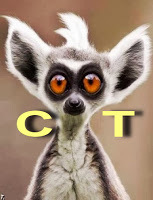
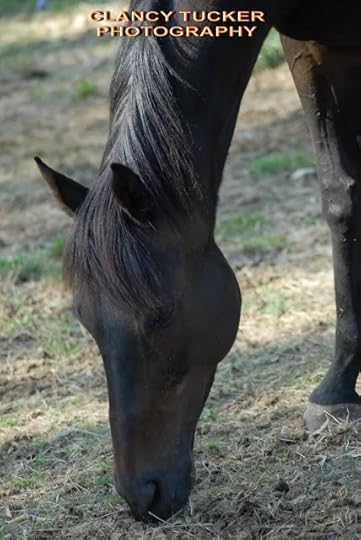
Published on December 26, 2015 02:34
December 25, 2015
26 December 2015 - TIM GURUNG - Guest Author
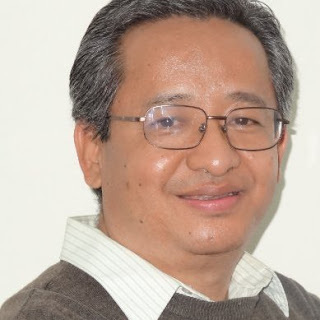
TIM GURUNG
_ Guest Author _
G'day folks,
Today, I introduce my first guest from Hong Kong. Tim is a writer of conscience; a man who writes on social & global issues, for people, society and mankind. Most importantly, he writes for his own happiness.
Welcome, Tim ...
1. TELL US A LITTLE ABOUT YOURSELF AND YOUR WRITING JOURNEY.
A – I am a writer of 8 books now, based in Hong Kong, I write on serious global and social issues, and use all the proceeds from my books to run my charity ISSLCARE.
2. WHEN AND HOW DID YOU BECOME A WRITER?
A – I started writing in 2009, but I only published my books in 2015, and have planned to write at least 2 books per year. Since I have been working from 17, I never wanted to work for money again after I turned fifty and writing was the easy choice. Writing makes me not only happy but I can also use it for helping the others and I wouldn’t trade my position for anything else for now.
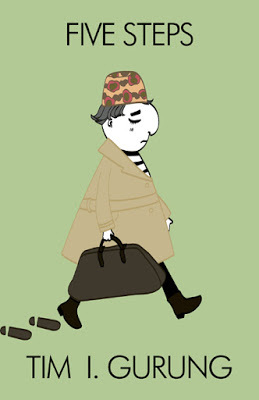
3. WHAT TYPE OF PREPARATION DO YOU DO FOR A MANUSCRIPT? DO YOU PLAN EVERYTHING FIRST OR JUST SHOOTS FROM THE HIP?
A – I always have the main theme of the book well thought out before I start writing, the prose of the story is roughly thought out as well, and of course, I make changes during the course of writing as the story progresses. In addition, I also keep notes of the main events, characters and other necessary details on a separate file, so, it won’t go ashtray.
4. WHAT DO YOU ENJOY MOST ABOUT BEING A WRITER?
A – The most beautiful thing of writing is you can put all of your imaginations into a story that can not only become real but also helpful in some aspects of other peoples’ life and for good or bad, it can change their life. My story is always for good, I want people to learn and inspire from my works and bring necessary changes in their life if possible.
5. WHAT IS THE HARDEST THING ABOUT BEING A WRITER?
A - You cannot earn a decent living out of it, your life will fly away before you can become a well-known writer and for that reason alone, most will give up on the middle of the way.
6. WHAT WERE YOU IN A PAST LIFE, BEFORE YOU BECAME A WRITER?
A – I served as a Gurkha soldier for the first 13 years after I joined them at 17, then I worked in the manufacturing industry back in China while raising my young family, and decided to become a fulltime writer after I turned fifty.
7. WHAT IS YOUR GREATEST WRITING ACHIEVEMENT?
A – Despite not going to university, English not being my first language and without any proper courses or training, I somehow managed to become probably one of the very few Nepali writers who write in English and whose works are internationally available now.
8. WHAT ARE YOU WORKING ON AT THE MOMENT?
A – My 8th book is going to be published by early 2016; I am applying some finishing touches onto it, and working on for my future books now.
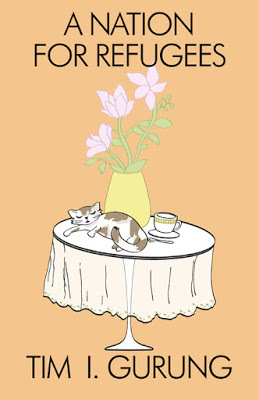
9. WHAT INSPIRES YOU?
A – I think the world has become more materialistic, people have become more selfish and self-centered, and nobody wants to be bothered by other peoples’ problems. Unless it starts affecting our own lives, it is someone else problem and that sort of mentality is making this world more apathy and indifferent. But we mustn’t forget our responsibility towards the global society, making our life good alone is not sufficient for me, and we should always help the poor, needy and weak ones. That is the only reason why I keep writing, I want to use it for goog cause so it is not wasted, and it also makes me happy.
10. WHAT GENRE DO YOU WRITE?
A – As I only write on serious global and social issues, my books are mostly a mixer of both fiction and non-fiction, and I prefer to say they are in literary/contemporary fiction.
11. DO YOU HAVE ANY TIPS FOR NEW WRITERS?
A – I am a very humble and modest writer, I am not sure if I am even qualified to give any advice, and if I really have to say, I would say, don’t leave your daytime job yet, good luck!
12. DO YOU SUFFER FROM WRITER’S BLOCK?
A – Yes, it happens to all sometime, but for me, it is momentary and if I just go out and do other things for a while, it will be just fine.
13. DO YOU HAVE A PREFERRED WRITING SCHEDULE?
A – No, I normally write on the afternoon at the office, the morning rush hour is filled with checking mails and other stuffs, and I don’t work at home and I don’t have other weird ideas of writing on the middle of the night or at the wee hour of the morning and so on.
14. DO YOU HAVE A FAVOURITE WRITING PLACE?
A – No, I just write on my office and that is all.
15. WHAT IS YOUR GREATEST JOY IN WRITING?
A – Writing is in my blood, it not only warm my heart but also provide solace for my soul as well as help save me from insanity.
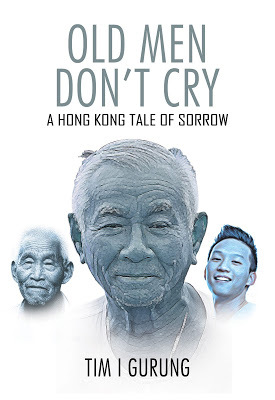
16. WHO IS YOUR FAVOURITE AUTHOR AND WHY?
A – I don’t have that many, I mostly liked the first book of any big name writers that I have read so far, but after reading his/her 2ndbook on, the magic is somehow gone. I do like to read books from all the Nobel Laureates though.
17. WHAT’S THE GREATEST COMPLIMENT YOU EVER RECEIVED FROM A READER?
A – I got quite a lot of great compliments from the reviews of my book AFTERLIFE, I have listed them on the description of the book itself at Amazon and some of them were pretty interesting. But it was the very first of my article in a local paper in Hong Kong that got almost 4 k likes on its first publication and established me as a writer in our society.
18. WHAT WAS THE WORST COMMENT FROM A READER?
A – It was not from the reader but a fellow writer, who without even reading my book rated my book 1 star out of envy and even contempt, it did really upset me and I even wrote an email to him with not so good words in it. But that was at the very beginning and now I am perfectly fine with it.
19. WRITERS ARE SOMETIMES INFLUENCED BY THINGS THAT HAPPEN IN THEIR OWN LIVES. ARE YOU?
A – Oh yes, that is for sure, we do usually write from our own experiences, events that occurred to our life definitely affect our writing and especially writers like me who write on serious global and social issues, it plays a great role in our writing.
20. OTHER THAN WRITING, WHAT ELSE DO YOU LOVE?
A – I used to love watching and playing football, the English football type, not the American, and after I turned over fifty, I learned the importance of living simple, and I can do without many things in life now. So, I am just writing and running my charity for now.
21. DID YOU HAVE YOUR BOOK / BOOKS PROFESSIONALLY EDITED BEFORE PUBLICATION?
A – Yes, that is the most important part of publishing, I have a long time professional editor, it costs me a lot but I don’t want to put craps on peoples’ hand and be ridiculed. Editing doesn’t mean it is okay to edit by our own, it doesn’t matter how many times you edit but there is a big different between doing it by yourself and a professional. If you want to be a decent writer, it is a must and you should never put your works out there without editing it by a decent editor.

22. DESCRIBE YOUR PERFECT DAY.
A – I wake up around 6:30, after washing up, I feed my lovely cat Vanila, change water and clean the littering, water my plants, prepare the worship place for my dear wife, eat breakfast, go to office, check emails, work on promotions and updates of social networking sites, read news, eat lunch, write at the afternoon, by 5pm we return home, water my plants again, feed my cat, pray, eat dinner, watch TV and go to bed by 10-10:30pm
23. IF YOU WERE STUCK ON A DESERT ISLAND WITH ONE PERSON, WHO WOULD IT BE? WHY?
A – My lovely wife, because without her I cannot simply survive, and I am totally dependent on her. SERIOUSLY!
24. WHAT WOULD YOU SAY IF YOU HAD THE CHANCE TO SPEAK TO WORLD LEADERS?
A – Stop being hypocrite, think for the people before yourself and the power invested to you by the people is not for quenching your egotistical thirst.
25. WHAT ARE YOUR PLANS FOR THE FUTURE?
A – I am planning to write at least 2 books in each year, I have a campaign of helping the poor children in Nepal that will eventually expand to the whole nation one day and until that is happening, I have to keep trying hard.
26. WHAT ARE YOUR VIEWS ON BOOK TRAILERS? DO THEY SELL BOOKS?
A – I haven’t made one, so, I am not in the position to say anything, sorry!
27. DO YOU SEE YOURSELF IN ANY OF YOUR CHARACTERS?
A – As I call myself a writer of conscience and righteousness, most of my main characters are good people, they don’t drink or take drugs, and they always tend to help other people and the society. Therefore, I think it is quite natural for writer to portray their heroes as they are and I am not exception.
28. DOES THE PUBLISHING INDUSTRY FRUSTRATE YOU?
A – Yes, in some extent, they only shoot for the shining star, people hardly give chance to the new ones, and it is very hard to be published through so called traditional publishing. I have never tried it, I didn’t have to as my expectation was not that high and I am not writing for money or fame. Vanity publishing has also given itself a bad name, 80-90% of the books on Amazon are craps, people just want to be called a published author, and they don’t give much thought about writing good books, promoting it properly and eventually succeeding on it.
29. DID YOU EVER THINK OF QUITTING?
A – No, never, it is never been the case for me, thank you!
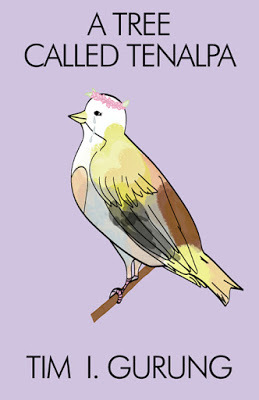
30. WHAT WAS YOUR FAVOURITE MANUSCRIPT TO WRITE? WHY?
A – OLD MEN DON’T CRY, my 7th book which going to be published on 6 Jan 2016, was perhaps the best book I ever wrote hitherto, it was also the book that I worked really hard and I had to do a lot of researches as well. It is a book about Hong Kong, it is also very sad and moving story and I wanted to write all the sad things of my life into it so henceforth I don’t have to write such sad book again. As of that I called it my own version of ONE HUNDRED YEARS OF SOLITUDE, and I do hope it will also turn out that way for me as well.
31. HOW WOULD YOU DEFINE ‘SUCCESS’ AS A WRITER.
A – I think it is a very subjective question, it depends on individual writers, and as far as I am concerned, a writer is successful when he or she has managed to write a book that she liked the most, read and accepted by at least tens of thousands of people and have substantial number of followers on social networking site, I suppose.
32. WHAT SHOULD READERS WALK AWAY FROM YOUR BOOKS KNOWING? HOW SHOULD THEY FEEL?
A – It is at least a decent book, oh, I didn’t notice this or that before and now I am going to do something about it. If this can be achieved, I will be more than happy!
33. WOULD YOU LIKE TO HAVE YOUR BOOKS MADE INTO MOVIES? EVER WRITTEN A SCREENPLAY?
A – Yes, of course, it will be a dream come true for all the writers, I used to dream sometime about Jackie Chan playing the main part of my book OLD MEN DON’T CRY, when I was writing it and I intentionally make the character with big nose to just fit in there. But of course, it doesn’t matter that much now.

34. HOW MUCH THOUGHT GOES INTO DESIGNING A BOOK COVER?
A – I mostly provide the synopsis of my books to the designer, the covers of my first 6 books were made by my own children and they were perfectly matching with the story, the other two covers were made my designers and I choose them if I liked them at the first look. Sometime, I also discuss with my other friends and families, and make necessary changes accordingly before the final decision. It is quite important to have the right cover for any books and one must choose it rightly so.
35. WHAT’S YOUR ULTIMATE DREAM?
A – I just want to keep on writing until I can expand my charity campaign to entire country of Nepal and help as many children as possible. If that can be done, I will be more than happy and that will be all for me.
36. WRITING IS ONE THING. WHAT ABOUT MARKETING YOU, YOUR BOOKS AND YOUR BRAND? ANY THOUGHTS?
A – Marketing is much harder than writing especially for writers, we are naturally a shy and introvert people and marketing book is not easy. Especially for the new and aspiring writer, it is extremely difficult and unless you have enough time, money and passion, you should let the professional do the marketing for you. Luckily for me, I already had much experiences on marketing through my previous jobs, besides, I have time, money and passion to work on my new project and still working really hard to set my feet on this new world. It is a very long, slow and assiduous road, it needs patience and hardship and one must be prepared for a very long haul.

37. ARE YOUR BOOKS SELF-PUBLISHED?
A – Yes, I decided to become a self-published writer, I didn’t even contact one publisher for my books and I have already explained my reasons for that above. I only write for my charity, my expectation is not that high and whatever I will be able to achieve in the future, I will be more than happy with it, so, I will just do my best and that is all.
38. DESCRIBE YOURSELF IN FIVE WORDS.
A – Honest, hardworking, determined, kind and conscience
39. WHAT PISSES YOU OFF MOST?
A – People’s choice of materialistic things, barking on the wrong tree, prioritizing on frivolity, and having a stereotyped view on almost everything in this world.
40. WHAT IS THE TITLE OF THE LAST BOOK YOU READ? GOOD ONE?
A – The last good book I read was ONE YEARS OF SOLITUDE by Marques and that was quite a while ago, thank you!
41. WHAT WOULD BE THE VERY LAST SENTENCE YOU’D WRITE?
A – The End! On each and every end of my book…!
42. WHAT WOULD MAKE YOU HAPPIER THAN YOU ARE NOW? CARE TO SHARE?
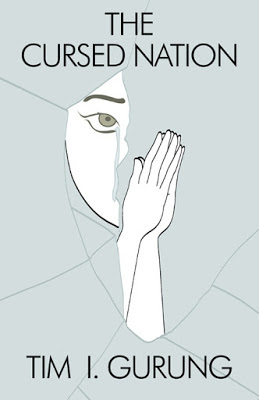
A – I wish the people were more kind, equal and reasonable. I wish the world was more nice, fair and peaceful. And I wish there were no sickness, sadness and sorrow in this world.
43. ANYTHING YOU’D LIKE TO ADD?
A- That would be all for now, thank you so much and have a nice day!
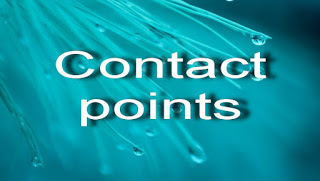
http://timigurung.com/

Clancy's comment: Thank you, Tim. I hope you are not my first and last guest from Hong Kong. Spread the word, my friend. I love your passion.
I'm ...


Published on December 25, 2015 02:15
December 24, 2015
25 December 2015 - CHRISTMAS IN AUSTRALIA
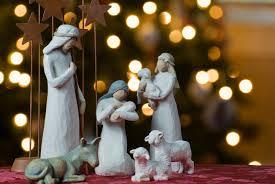
CHRISTMAS IN AUSTRALIA
G'day folks,
Happy Christmas to you all. Ever wondered what we do in Australia at Christmas? Wonder no more. Christmas Day falls on December 25 and is an occasion for Christians to celebrate the birth of Jesus. Many people, even if they are not Christian, give each other gifts, prepare special meals and decorate their homes at this time of year. Many aspects of the Christmas celebrations originated from winter celebrations in Europe. However they are increasingly influenced by the Australian climate and wildlife.
What do people do? People often spend Christmas Day with family members or close friends. Christmas Day falls in the middle of the summer school holiday and both December 25 and 26 are public holidays. Hence, many people celebrate the event away from home, in holiday parks, on camp sites or at relatives' homes.
In the weeks before Christmas Day, many people decorate their homes with Christmas decorations. These often include a Christmas tree, candles or small electric lights, glass baubles, tinsel, snowmen, fake snow and figures of Santa Claus in his red fur-trimmed outfit. Typically Australian decorations are also used. These are glass baubles or wooden ornaments decorated with images of Australian wildlife, such as bilbies, koalas, king parrots, Waratah flowers, or Australian landmarks. Small statues of native animals dressed in 'Santa' hats and sleighs pulled by groups of six white kangaroos are also popular, as are figures of Santa Claus in beach clothing.
On Christmas Day, children hope to receive gifts in a stocking or under the Christmas tree from the mythical figure Santa Claus. In the weeks before Christmas, they write letters to him so that he knows what they want. In some stories, Santa Claus wears a thick red, fur-trimmed suit and travels in a sleigh pulled by reindeer. In others he wears shorts and a loose, brightly colored shirt and his sleigh is pulled by six white kangaroos. In some families, individual members also exchange gifts.
Many people eat a special meal on Christmas Day. Traditionally, the main meal was similar to the Christmas meals served in Europe. They consisted on roast meats and vegetables and heavy fruit cakes and steamed puddings. A small coin was often baked inside a steamed pudding, which was doused with burning alcohol before being served. Whoever found the coin in his or her portion, would have a lucky year. However, now many people choose to hold a barbecue at the beach or a picnic in a park or prepare a meal of cold meat and seafood followed by Pavlova, a soft meringue cake topped with whipped cream and fresh fruit.
Public life
Christmas Day falls in the summer school holiday. All schools and other educational establishments, many businesses and many stores are closed on Christmas Day. Some public transport systems close down and others offer only a limited service. If you wish to travel by public transport, it is a good idea to check the services before you make your plans.
Background and symbols On Christmas Day, Christians celebrate the birth of Jesus. Different denominations have a range of traditions and types of Church service around Christmas Day. Catholics often attend midnight mass, which starts at midnight as Christmas Eve leads to Christmas Day. Other denominations attend special church services during the day on December 25.
There are a number of native Australian plants that include “Christmas” in their popular names. This is usually because they flower during the Christmas period. Examples include: Christmas bells, Christmas Bush, the Christmas tree and the Christmas orchid.
FUN CHRISTMAS FACTS:
The song "White Christmas" holds the credit as the most-selling Christmas single of all time.Santa Claus has nine reindeer counting Rudolph that pull his sleigh.Saturnalia, was the Romans holiday that was celebrated in December.It wasn't until about 200 years after Christ's death that Christians started celebrating his birth.In northern Europe there was a holiday known as Yule. They celebrated this holiday by making great fires. They then would dance around the fires, yelling for the winter to end.Austria was the first country to issue a Christmas postage stamp.Silver and gold are the popular Christmas colors after red and green.Eggnog the popular Christmas food was an American discovery.The Christmas carol "I Saw Momma Kissing Santa Claus" was made famous by Jimmy Boyd when he was just 12 years old.Christmas lights were invented by the American Ralph E. Morris.W. C. T. Dobson invented the Christmas card.Canada is the largest exporter of Christmas trees.King's Canyon National Park, California has the world's largest Christmas tree.Coca-Cola made the concept of Santa Claus popular in America.There are twelve days between Christmas and the Epiphany.

Clancy's comment: There ya go. Now ya know, eh? Hey, did you invite that stranger over for Christmas dinner? Go on. You can do it. Never too late.Have a top day everyone. And, have a few for me.
I'm ...

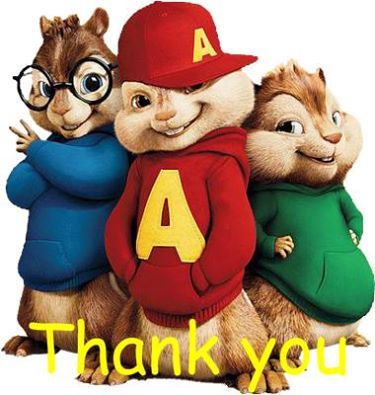
Published on December 24, 2015 05:18
December 23, 2015
24 December 2015 - CHRISTMAS AROUND THE WORLD

CHRISTMAS AROUND
THE WORLD
G'day folks,
My best wishes to all of you, especially my wonderful followers, and those who have contributed to this blog, or been willing to be a guest.
Thank you!
This year has been a big one for me. I’ve sold my house and moved temporarily, my mother died, I’ve released four new books, wrote my first screenplay for my first book, a film is well underway, and I've booked a long holiday.
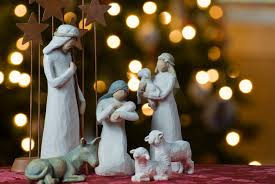
I sincerely hope this Christmas is a wonderful time for you all.
To many kids around the world Santa is a wonderful chubby man from the North Pole who wears a red suit and flies around on a sleigh on Christmas Eve to leave gifts. To them he is a magical person. So, what happens around the world on Christmas Eve?In the United States and Canada, his name is Santa Claus. He flies through the sky in a sleigh pulled by eight reindeer. In England his name is Father Christmas. He looks much like Santa Claus, but he has a longer coat and a longer beard. In Wales (a principality in the United Kingdom), Santa is called Sion Corn - this translates as "Chimney John" relating to the story that Santa comes down the chimney of each house to bring his gifts to the children within. In France, he's known as Pere Noel. He is also called Pere Noel in Canada. In Brazil and Peru, he's called Papai Noel. In Germany, children get presents from Christkind, the Christ Child on the 24th of December. Also, in Germany Knecht Ruprecht and his helpers come on the 6th of December. Krampus brings coal or a wooden stick to the children that have not been good, Knecht Ruprecht brings mostly cookies, nuts and a small toy to the good children. Belsnickel - German version of Santa who carries a switch to beat the bad children. In Germany, Father Christmas can also be called der Weihnachtsmann. In Poland, Santa "Swiety Mikolaj" (Saint Nicholas) was a cardinal in the Catholic Church, he visits children on December 6th and he brings presents, mostly sweets, which he leaves in children's clean shoes. In some Slovac countries, Santa is "Swiety Mikolaj" ("star man") -- for the North Star. He visits children on Christmas Eve, bringing presents. The Christmas Eve meal begins once the first star is seen. In Costa Rica, Colombia, and parts of Mexico, the gift bringer is El Nino Jesus, "the infant Jesus." In Puerto Rico, children receive gifts from the Three Kings on January 6th. Each child puts grass under their bed for the camels and in the morning the grass is replaced with gifts. Jultomten or Tomten in Sweden. Jultomten visits in the evening before Christmas day, pulling a big bag of julklappar (Christmas presents) in the deep snow. På norsk (in Norwegian) "Julenissen" arrives on the evening of the 24th. In the Netherlands, he is called Kerstman. He flies through the sky with his reindeers and puts gifts under the Christmas tree on the 25th of December. De Kerstman lives in Finland. His counterpart "Sinterklaas" is another saint, who is celebrated on the 5th of December. Sinterklaas comes back every year from his home in Spain by steamboat, together with him are a whole group of "zwarte pieten" who help him while he's riding on the roofs - distributing gifts through the chimney. In Finland, he is called Joulupukki and his home is in Lapland in the north part of Finland called Korvatunturl. Also in Finland, the Swedish-speaking Finns (finlandssvenskar) call him Julgubben. In Spain the children the night of January 5th put their shoes under the Christmas tree and have presents from the Three Kings (Los Reyes Magos: Melchor, Gaspar and Baltasar). Santa Claus is called Papa Noel and there are children who have presents both days on December 25th (from Papa Noel) and on January 6th (from the Three Kings). In Russia, he is called Grandfather Frost or Ded Moroz. Also, there is Babooska the person who was searching for Christ the night he was born. She spoke to the Three Wise Men or Three Kings on their way to find him, they offered their company to her. But she replied I am too old, so the Three Men went on without her and she set search the following day but the "King" had gone from his birth place and when Babooska heard the news she decided to give her presents for Christ to the childern in her country Russia every year on the 13th of Dec to make them happy. He is also called Kriss Kringle - origin unknown. He is also called St. Nick origin Turkey. Télapó is Santa Claus in Hungarian. In Italy, he is called Babbo Natale. Also, they recieve their presents on January 6th from the gift bringer an old lady called Befana. Black Peter, St Nick's helper which originates from Morocco or Liberia. In China, he is called Shengdan Laoren. In Denmark they call him, Julemand. In Hong Kong they call him Sing dan lo ian in Cantonese. In Slovenia they call him, Bozicek. In Latvia Santa Claus is called Ziemmassve'tku veci'tis. In the country Uruguay he is called Papá Noel. In Lithuania, Santa Claus is called Kaledu Senis. In Portugal, Santa Claus is known as Pai Natal. He brings presents on Christmas Eve. However, the portuguese tradition says the presents in that night are brought by the Newborn Jesus "Menino Jesus". In Estonia he is called Jouluvana. In Ireland he is called Santa Claus and children abbreviate this to just Santy. Many children in the Hindu religion receive gifts from their god Ganesha during the Holiday Season. In Austria, children get presents from Christkindl, the Christ Child on the 24th of December. In Greece, Santa Claus is called "Aghios Vassilis" and he comes on the night of 31st December leaving the presents under the tree for the children to find them on New Year's Day. In Hawaii, Santa Claus is known as Kanakaloka. In Armenian, Santa Clause is Gaghant Baba and he brings presents to all the good girls and boys. The name for Santa in Yugoslavia is Deda Mraz. In Croatia, he is called Bozicnjak. In Bulgaria they call him Diado Coleda. In El Salvador, for some families Santa Claus brings gifts on Christmas Eve to those children who are well behaved. People get together with the family, children go to bed and find a gift on December 25th. In Urdu he is called Baba Christmass. In Romania, Santa Claus is Mos Craciun and he comes on the night of the 24th of December bringing presents. Also, the night of the 5th of December is Mos Nicolae (St. Nicholas) puts candies in the good children boots or a stick in the bad ones. In Nevis/St. Kitts in the Caribbean, Santa Claus comes up from under the sea, not from the North Pole. In Albanian he is called Urime Krishtlindjet.
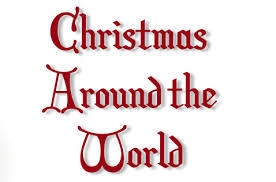

Clancy's comment: Oh, one more thing. Why not have a look around and invite a stranger over for Christmas dinner. There are swags of people who spend Christmas Day alone. Do it! Trust me. It will give you such a buzz. I've done it many times.

Having said that, check out this video. It's a group of people who helped a family out during some tough times.
Anyone who's lost a loved one knows that holidays can be some of the most challenging times. We can't help but remember the traditions and special moments we shared with them in years past, making us wonder if these celebrations will ever feel the same.
This family lost their father and husband last year and weren't sure how they'd handle Christmas without him around. They recently returned home after being away for a while, unsure of how they would feel when they reentered the house that holds so many memories.
Little did they know, some of their close friends had volunteered their time to make it as warm and welcoming as possible. There's no doubt that this year will be hard, but, hopefully, the decorations will remind them of their father’s love and the wonderful times they shared together.

CHRISTMAS VIDEO
I'm ...
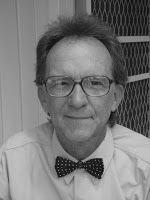
HERE IS A SPECIAL COMMENT TO
ALL OF MY FAITHFUL FOLLOWERS
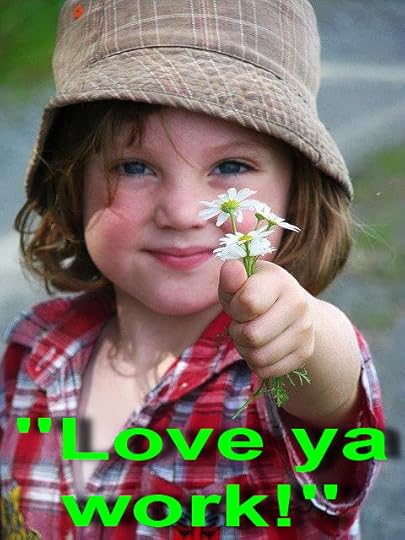
Published on December 23, 2015 01:58
December 22, 2015
23 December 2015 - SARAH BEGUM - Guest Adventurer

SARAH BEGUM- GUEST ADVENTURER-
G'day folks,
Welcome to an interview with a very talented adventurer.
Welcome, Sarah ....
A Fellow of the Royal Geographical Society, Sarah Begum is an Immersive Investigative Journalist and an Anthropologist-Explorer. In 2010, Sarah’s curiosity led to the greatest achievement of her life, becoming the youngest female Documentarian at 21 years of age to produce her first film in the Amazon Rainforest. There, she lived with the Huaorani tribe, immersed in their culture; hunting and gathering with warriors, whilst investigating the impacts of oil exploitation on their land and how modernity affected their way of life.
Sarah has been exploring the world, studying tribes and different ways of life whilst investigating current affairs and making a humanitarian effort to help people along the way. In 2014, Sarah partnered with Russ Malkin to set up The Adventuress Club, a platform to connect, share, empower and encourage women through the world of adventure.
1. TELL US A LITTLE ABOUT YOUR WRITING JOURNEY.It began with writing articles about my experience in the Amazon Rainforest.
2. WERE YOU A GOOD READER AS A KID?I loved mystery novels and always enjoyed reading out loud in class. So, yes! I guess I was a good reader as a kid.
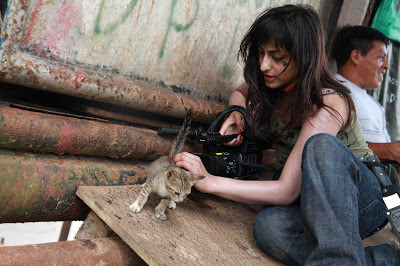
3. WHEN AND HOW DID YOU BECOME A JOURNALIST? WHAT INSPIRED YOU?It just happened when I realised I could write about topics I was passionate about, had an opinion on or experiences I encountered. I would write stories. Those stories became articles. Somehow. Somewhere.
4. WHAT DO YOU ENJOY MOST ABOUT BEING A JOURNALIST?The action packed adventures in my investigations that gives me a story to write about.
5. WHAT IS THE HARDEST THING ABOUT BEING A PROFESSIONAL WRITER?Trying to get an article commissioned and finding out that a national or bigger publication who you pitched to has stolen your idea.
6. WHAT WERE YOU IN A PAST LIFE, BEFORE YOU BECAME A WRITER?Once upon a time, I was a fashion designer!
7. WHAT IS YOUR GREATEST WRITING / BROADCASTING ACHIEVEMENT?My film, Amazon Souls being premiered at the Cannes Film Festival in 2013
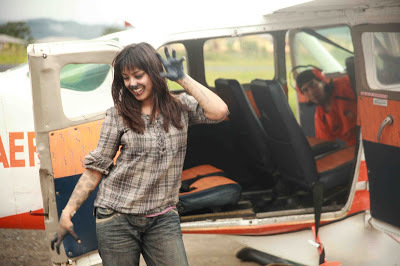
8. HAVE YOU BROKEN ANY BIG STORIES?I’ve made big stories on the headlines of national and international newspapers
9. DO YOU ENJOY WRITING / REPORTING FOR A MEDIA CORPORATION?Yes, I love reporting and writing about things that matter to me and the world around me.
10. WHAT TOPICS DO YOU COVER?Adventure, travel, film/tv, anthropology, environment.
11. WHAT IS YOUR GREATEST JOY IN WRITING?Capturing reality through words in a creative way. It’s a form of art.
12. WHO IS YOUR FAVOURITE AUTHOR AND WHY?Paul Theroux, because his descriptions of places and people is outstanding and piece of genuinity.
13. DO YOU WORK AS PART OF A TEAM, FREELANCE OR BOTH?Both.
14. WHAT WAS YOUR TOUGHEST ASSIGNMENT? WHY?Writing about finance because it was out of my comfort zone and less interesting than what I was used to.
15. WHAT’S THE GREATEST COMPLIMENT YOU EVER RECEIVED FROM A READER?They were able to experience my journey with me.

16. WHAT WAS THE WORST COMMENT FROM A READER?I haven’t had any worst comments yet.
17. WRITERS ARE SOMETIMES INFLUENCED BY THINGS THAT HAPPEN IN THEIR OWN LIVES. ARE YOU BY THE STORIES YOU COVER?Yes and no. Some are personal and others are just as important but not necessarily from a personal experience.
18. HAVE YOU WON ANY PRIZES OR AWARDS?I’ve had a poem published in an anthology.
19. WHAT DID THEY MEAN TO YOU?It was a childhood achievement that made me realise there was a talent that I needed to keep refreshing and using.
20. ANY OVERSEAS WORK?Venezuela. A news media corp.
21. OTHER THAN WRITING, WHAT ELSE DO YOU LOVE?Exploring, filmmaking and humanitarian missions.
22. WHAT WOULD YOU SAY IF YOU HAD AN OPPORTUNITY TO SPEAK TO WORLD LEADERS?To unite together to generate genius plan and make the world a better place by solving all of its problems.
23. DESCRIBE YOUR PERFECT DAY.Start the morning with inspirational quotes, martial arts training, an action packed adventure with me being filmed in a remote or treacherous place of the world, capturing exciting and interesting stories, helping someone, blogging about the adventure and then meeting inspirational figures for dinner and watching a film or documentary before hitting bed.
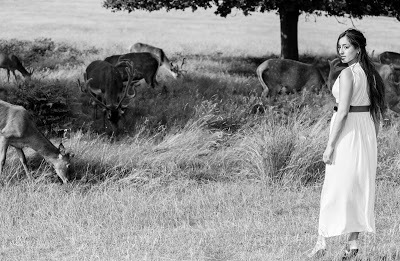
24. WHAT ARE YOUR PLANS / ASPIRATIONS FOR THE FUTURE?Many things. To cover great stories around the world for broadcast.
25. DO YOU THINK PRINT NEWSPAPERS ARE SERIOUSLY CHALLENGED BY THE INTERNET? HOW?Yes, because digital journalism has taken the world by storm with more users reverting to technological devices than the old papers.
26. WHO OR WHAT HAS INFLUENCED YOU IN YOUR WORK?My experiences and people’s stories.
27. WHO OR WHAT INSPIRES YOU?Life inspires me. Successful people moulded by adversity inspire me. TED talks inspire me too!
28. DO YOU TAKE PHOTOGRAPHS TOO?Yes, but mostly on my phone or whatever I can find to capture the moment.
29. ANYTHING YOU’D LIKE TO ADD?Fly outside the box. Then aim for beyond space. Only then, your mind can count the bigger picture and solve simple equations. This is for any aspect of your life when you need to do something, whether work or life changing decisions.

30. WHAT WOULD BE THE LAST SENTENCE YOU’D WRITE?Thank you. Appreciation is key to progression.

WEBSITE:
YOUTUBE:

Clancy's comment: Go, Sarah! Keep travelling and telling the world. Love ya work!
I'm ...
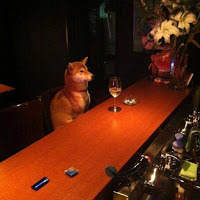

Published on December 22, 2015 02:11
December 21, 2015
22 December 2015 - JOHN LENNON - 75 YEARS ON
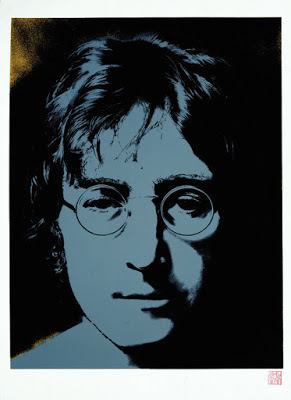
JOHN LENNON75 YEARS ON
G'day folks,
Here is a post about a very interesting man. However, he was not only a musician. Amongst other things, he was a deep thinker. John Lennon would have turned 75 this year. Of course, there have been multitudes of books written about his musical contribution to the world, both as one of The Beatles and as a solo artist. This particular writer has read quite a few of them, and couldn’t agree more that the music world—and perhaps the world as we know it—wouldn’t have been the same without him.
But Lennon’s artistic side wasn't just expressed in his music; it manifested itself in every aspect of his life. As a teen, it was in the way he dressed, and his sharp and often cruel wit. He found the outlet he desperately needed in his guitar and the rock 'n' roll that was making its way across the Atlantic, and ultimately became one of the greatest songwriters in the world. But before he was an icon, before he was a world-renowned musician, Lennon was an artist. From the time he was a schoolboy, he kept a notebook full of his drawings, dubbed it The Daily Howl, and shared it with his friends and classmates. And he never stopped drawing, no matter what else was changing in his life or his career.
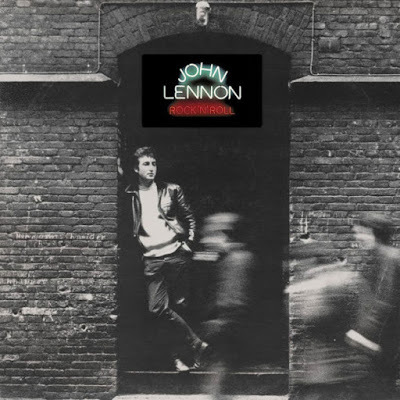
In recent interviews, Yoko Onohas talked about how pleased Lennon would have been to have his own art exhibit. Right now, to celebrate his life's work as well as his birthday, The Art of John Lennon is up at the AFA Gallery in Soho, New York, throughout the month of October. The art has been curated from a collection of rare archival sketches, and is available for acquisition as well as on display to the public for free.
As a tribute to the artist in John Lennon, we’re taking a look at five significant places, people, and events that made his artwork, and his passion for it, change his life, and therefore, arguably, all of ours who listen to him.
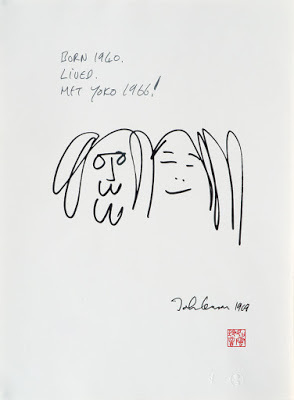
1. THE LIVERPOOL COLLEGE OF ART
As a rebellious teenager, there wasn’t much chance of Lennon getting into a traditional college, especially given the strict British educational standards of the 1950s. Luckily, there was the nearby Liverpool College of Art, which became the catalyst for changes in Lennon himself, in his work, and in the early development of The Beatles.
It was there where his artistic talent was actually noticed and appreciated, and it was a place where he could get to know other artists, some of whom even earned his very hard-won respect including two very important figures in his life: Stu Sutcliffe and Cynthia Powell.
‘Cyn,’ as Lennon called her, became his first wife and the mother of his son Julian.While their marriage ended harshly, she was still his first young love, and his passion for her helped fuel his passion for music and his drive to succeed, especially once he became a father.
Sutcliffe was Lennon’s best friend, and a great source of inspiration. He was considered brilliant by everyone else at the art college, and when he accomplished the amazing feat of selling one of his paintings for 65 pounds, Lennon talked him into spending it on a bass guitar and joining The Beatles, ignoring the fact that he couldn’t really play. While his good looks were a no-brainer for attracting female fans, he usually turned his back to the audience so people couldn’t see that more often than not, he was playing in the wrong key. (A frustrated Paul McCartney eventually took over the bass himself.)
But Sutcliffe’s influence on Lennon as an artist was immeasurable, as was his encouragement of Lennon’s talent. While Lennon’s teachers were frustrated by his rebellious attitude, Sutcliffe was there to reassure him that there really was an artist in there, albeit a misunderstood one.
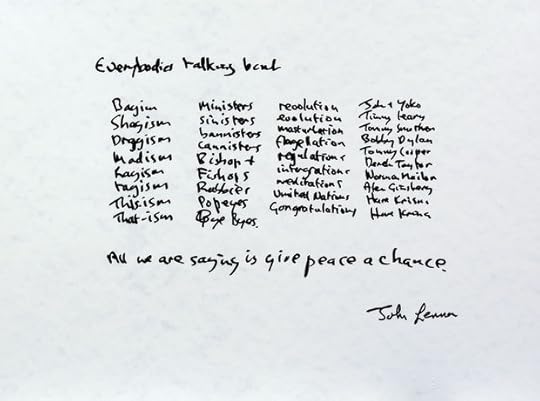
2. GERMANY: ASTRID, JURGEN, AND KLAUS
In 1960, The Beatles—which at that time meant John Lennon, Paul McCartney, George Harrison, Stu Sutcliffe, and drummer Pete Best—headed to Hamburg on their very first tour. Soon after their arrival, they met three German art students: Astrid Kirchherr, Jurgen Vollmer, and Klaus Voorman. The three young German artists were immediately drawn to the British bad boys, and the infatuation was mutual. They read Astrid’s books, they ate meals in her mum’s kitchen, and they were fascinated by her art, her photos, and her taste in design. Sutcliffe and Kirchherr fell in love, and Sutcliffe ended up staying in Germany with her, thus freeing himself from his role as a bad bass guitarist.
Kirchherr had a big impact on the group’s style. When Sutcliffe asked her to cut and style his hair like Voorman’s, the rest of the band soon followed, and the famous “Beatle haircut” was born. (Kirchherr later laughed this off, saying that the haircut was already popular in Germany at the time.) Kirchherr also designed her own clothes, and it was she who created the collarless jacket that also became an early Beatles trademark.
Voorman, like Lennon, was a talented artist as well as a musician. He stayed connected to The Beatles throughout their career, winning a Grammy Award for his cover art on their Revolveralbum. In the 1990s, he designed the cover for the Beatles Anthology albums. He also played on solo albums for Lennon, Harrison, and Ringo Starr.
Vollmer, like Kirchherr, was also a photographer, and they both took dozens of early photos of The Beatles, finding endless inspiration in their subjects, and teaching John the artistic value of a great photograph. Years later, Lennon would choose one of Vollmer’s photos for the cover of his Rock 'n' Roll album, showing him standing in a doorway, the blurred figures of George Harrison, Paul McCartney, and Stu Sutcliffe in the foreground.
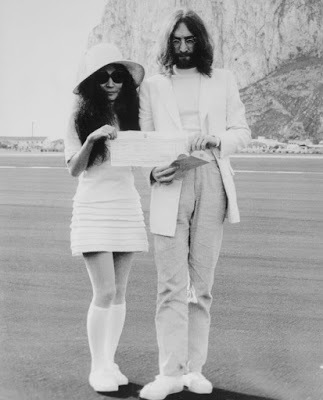
3. LONDON: MEETING YOKO
Where did John Lennon first meet future wife and soulmate Yoko Ono? At an art show. . .hers, to be precise. Yoko, an avant-garde artist in London, was about to have her very first exhibit at the Indica Gallery, and the day before it opened, Lennon went to preview it on the advice of a friend. He appreciated the absurdity of her work right away, and most of it made him laugh as it challenged his ideas about what art was and wasn't. He responded to her request to nail an imaginary nail into a wall with a hammer for five shillings by offering her an imaginary five shillings. They locked eyes. The connection was made.
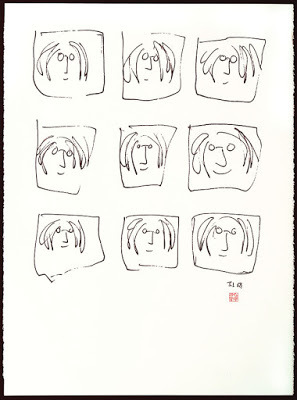
4. THE LATE 60s/EARLY 70s ART SCENE: GETTING EXPERIMENTAL
In 1968, they opened their first joint art exhibit, officially titled You Are Here (To Yoko from John Lennon, With Love). Reflecting their interest in performance art and "happenings" as well as gallery art, they wore white to match the gallery walls. After the London opening, they went outside and released 365 white balloons filled with helium into the city. Cards were attached to each one encouraging whoever found them to mail them to Lennon care of the gallery, and those who did so were rewarded with a handwritten thank you note from Lennon.
The two combined their new need to be inseparable as a couple with their art, music, and performance. From their rather unlistenable squalls on their first album together, Two Virgins, and its cover featuring their naked, unretouched bodies, to their experiments in bagism (which included an entire press conference given from inside a bag) and their planting of “acorns of peace” in the garden of Coventry Cathedral, they played with the definition of art and politics, willing to try anything to see what messages got through to a bewildered but often fascinated public. They created happenings, made films, and Lennon, as always, kept drawing.
Lennon and Ono—now dubbed JohnandYoko by Lennon—married in 1969. As a wedding gift, Lennon presented Ono with a collection of erotic drawings of the two of them called Bag One. When they set up a gallery exhibit featuring the drawings a year later, Scotland Yard came to shut it down, confiscating 8 of the 14 prints. “Depravity and corruption” were the issues at hand, and later dismissed by a judge. In 1981, the same collection went on a worldwide tour, hitting 100 different cities, and, still controversial after all those years, was shut down in Rhode Island, due to so-called obscenity. These days, it's part of the permanent collection of the Museum of Modern Art in New York City.
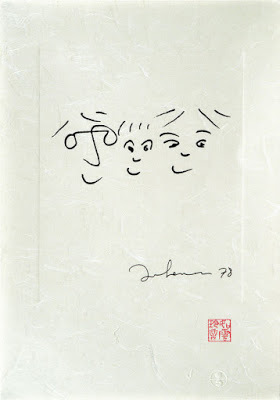
5. NEW YORK AND JAPAN: FINDING CONTENTMENT IN FAMILY LIFE
In what were to be his final years, Lennon kept drawing. Ono reports that he was at it all the time, not just in meetings that bored him but everywhere they went, and he was so frequently pushing his creations at her that she would laugh and say “yeah, yeah" when he handed her yet another new one.
In June of 1977, Lennon and family went on an extended visit to Japan. Still open to all kinds of artistic influences, he started adding a sort of signature to his newer work: a traditional red artist's mark of Japanese characters. His translated to "like a cloud, beautiful sound."
His drawings never lost their whimsy, but he softened up around the edges. No longer drawing the “cripples” he used to create in his Daily Howl notebook, his favorite subject was now the trio of John, Yoko and their son Sean.The pictures were happy ones; portraits of a man who had finally found contentment and made peace with himself.
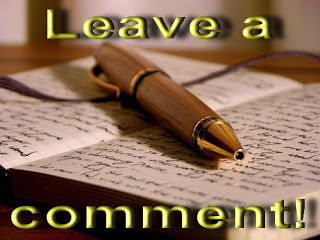
Clancy's comment: An amazing man in many ways. Go, John!
I'm ...

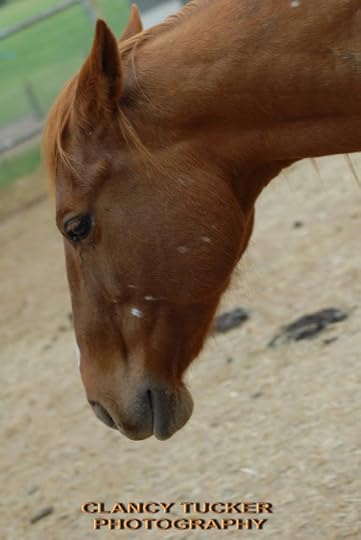
Published on December 21, 2015 02:13



